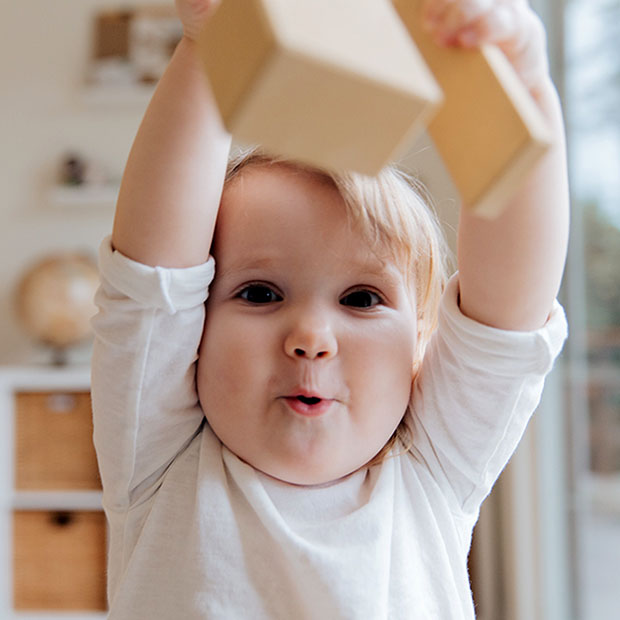Early Vision Development: A Parent’s Guide

Did you know that using our eyes is something we have to learn how to do?
That’s right, not only are we not born with fully developed eyesight, but all of the visual skills we use hundreds of times a day take a lot of practice to master, just like it takes a lot of practice learning to walk and talk. If you have a baby or toddler, there’s a lot you can do to help keep their vision development on track, including by providing toys that help them use their eyes.
What Your Baby Sees in the First Six Months
An infant’s field of vision is made up of blurry shapes, light, and shadow. They can only really focus their eyes at a distance of 8-15 inches away, which is just the right distance to look at you while you hold them. In time, they begin to see more clearly and sharply as their central vision develops. Parents can help by following these tips:
- Surround them with color. It takes a few months for them to see well in color, but once they can, they won’t be able to get enough of looking at anything vibrant and colorful, such as a mobile over their crib.
- Encourage movement tracking by zooming objects around in front of them.
- Play peek-a-boo to give them practice focusing.
Incredible Progress in Months 6-12
Hand-eye coordination starts to develop around month six, which makes it a great time to start giving Baby plenty of colorful objects to grab and play with. As they become mobile by crawling or scooting, their coordination will improve even further — sometimes at the cost of a bump on the noggin, because the realization that their head doesn’t stop at their eyes isn’t intuitive at first.
Peek-a-boo will lose its appeal at some point in these months because your child now understands object permanence. They’ve learned the trick behind the magic and understand that you aren’t some wizard who can blink in and out of existence, so it’s time to change the game to something more advanced, like hiding toys under a blanket for them to find.
Further Advancement in Toddlerhood
Babies continue to improve their coordination by learning to walk and playing with toys like balls. Two major factors in a toddler’s developing visual skills are balance and comprehension. They’ll begin to attach names to objects they see and interact with as they learn to talk, and by age two, many toddlers make their debuts as artists. Be sure to keep them well supplied with crayons and paper. They’ll also benefit from playing with wooden blocks they can move and stack or ones that interact.
Early Eye Exams Matter
All of these toys and games are very helpful for keeping childhood visual development on schedule, but don’t forget about eye exams. Babies and toddlers lack an adult’s understanding of when something might be wrong with the way they see, and they also lack the words to explain what they’re experiencing. This is why we strongly encourage parents to bring their child in for their first eye exam as early as six months old, with a second appointment around their third birthday.
